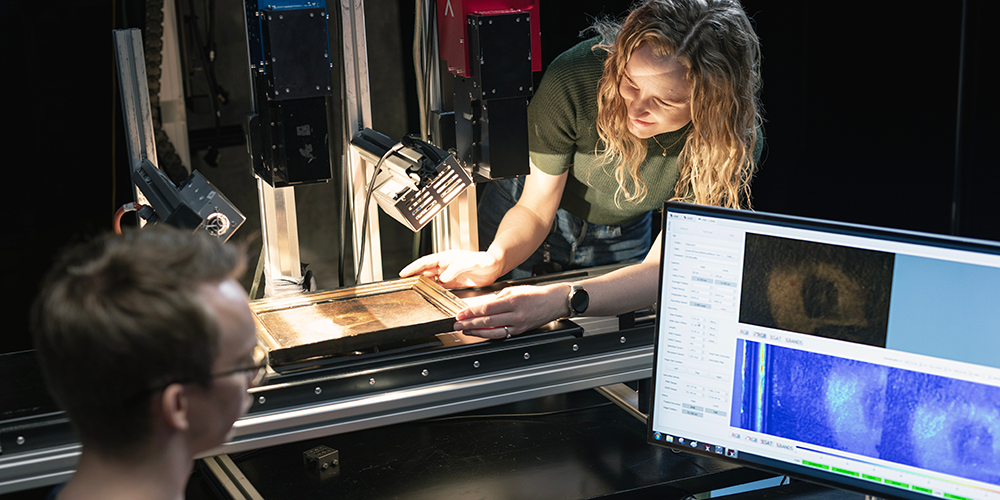Cultural heritage imaging
Imaging for cultural heritage

Image: Geir Mogen, NTNU
Analysis of cultural heritage objects
Have you ever wondered how scientists can reveal hidden layers, pigments, and materials of ancient paintings, manuscripts, and other cultural heritage (CH) artifacts? How we can detect and prevent the changes caused by time, and other external factors, or how to protect and preserve these objects for future generations?
One of the answers is to document and analyse using digital imaging. Imaging is the process of capturing and processing images of objects using different types of sensors and techniques. Imaging can provide a lot of information about the physical and chemical properties of objects, such as their shape, colour, texture, reflectance,etc.
Different imaging modalities
Not all imaging techniques are the same. There are several different imaging modalities available, and the choice of these systems depends on the purpose and suitability of each CH objects. Some are more suitable for certain types of objects, some can capture more details and information, and some can be more challenging and expensive to use than others. That is why scientists need to develop and compare different imaging techniques and find the best ones for their specific applications and needs.
This is what Colourlab is doing by conducting research related to various imaging modalities, such as hyperspectral imaging, reflectance transformation imaging, 3D, and the analysis and interpretation of the data obtained
Multi- and Hyperspectral Imaging
Multispectral imaging captures few images compared to hyperspectral imaging that captures images of objects in hundreds of narrow bands of wavelengths, from the visible to the infrared spectrum. Both these techniques allow the extraction of spectral information, which can reveal the composition and distribution of constituent materials in the objects. With the application of different traditional and artificial intelligence-based computer vision algorithms it is possible to analyse and understand digitised images captured from the CH objects.
Colourlab has been working on developing novel methods and algorithms for these imaging techniques and applying them to various cultural heritage objects, such as paintings, manuscripts, glass, etc. For example, Colourlab researchers have conducted research to understand the quality aspects and standardisation of hyperspectral imaging workflow, which can document the CH objects more precisely. We also made algorithms to process and analyse the images, which can help with tasks such as finding and mapping the colours, the inks, and the materials on the objects (Pillay et al., 2019). We used hyperspectral images to find and locate different pigments on paintings, such as The Scream (1893) by Edvard Munch. Deborah et al. (2019) identified and located where cadmium yellow, vermilion, and cobalt blue were used to create his famous masterpiece.
Our researchers have also explored how to use computer vision to extract information from CH objects, using artificial intelligence techniques which sheds light towards the authenticity aspects. They showed that they can create realistic-looking forgeries, but also expose them using a trained algorithms (Ciortan et al., 2022).
These are just some examples of Colourlab’s research on imaging for cultural heritage. They show how Colourlab’s methods and solutions can help us learn more about the past and preserve it for the future. Follow the projects and publications related to CH to learn more about the past and ongoing activities.
This text has partly been generated by Microsoft Copilot (AI)
